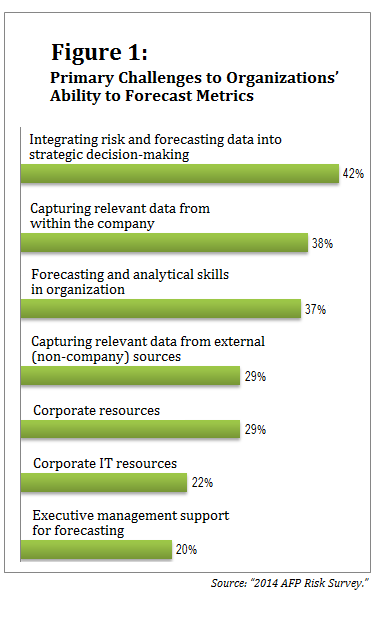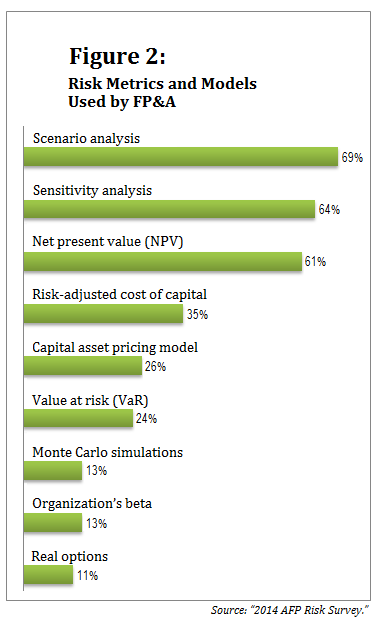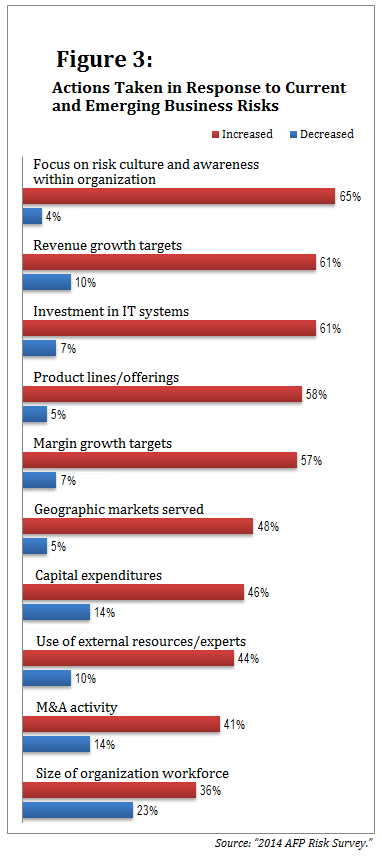Today, the Association for Financial Professionals (AFP) released the results of its “2014 AFP Risk Survey,” sponsored by Oliver Wyman. The survey of 554 AFP members revealed that although organizations expect the global business environment to remain challenging this year, finance executives are now more focused on internal issues than on the macroeconomic climate.
The external environment continues to cause concern: Forty-five percent of respondents said their company is exposed to more earnings uncertainty today than it experienced three years ago, and only 16 percent said they're now operating with less uncertainty than in 2010. The causes vary. Just over a quarter of respondents (26 percent) cited financial factors such as credit, liquidity, interest rate, and currency risks as the primary driver of their earnings uncertainty. Almost as many (23 percent) cited business/operational risks (e.g., supply-chain disruptions, litigation, IT), and another quarter selected external factors such as regulatory and country risks. Only 19 percent reported that macroeconomic factors, such as GDP growth and inflation, are the key driver of their earnings uncertainty.
To manage their financials amid these uncertainties, companies need to accurately forecast their myriad risks—but that's easier said than done. For 35 percent of the companies represented in the AFP survey, forecasting risks is more difficult today than it was three years ago; risk forecasts are easier today for only 23 percent of respondents. Almost a third of finance executives said that capturing relevant data from external sources causes forecasting challenges, but many more said it's challenging to capture relevant data from within the company. (See Figure 1.)

For some companies, the problems start with a siloed approach to financial planning and analysis (FP&A). Less than half of survey respondents (48 percent) said their FP&A team employs risk analysis on a regular basis; 29 percent said FP&A staff use risk analysis occasionally. The vast majority of FP&A teams that use risk analysis undertake scenario planning (69 percent of all respondents), sensitivity analysis (64 percent), and net present value (NPV—61 percent). Lower proportions use other analytical methods such as risk-adjusted cost of capital, value at risk (VaR), and Monte Carlo simulations (see Figure 2). More than a third of respondents think their strategic planning activities would benefit from more risk-adjusted analysis.

Only one in five (21 percent) reported a high degree of collaboration between their FP&A and risk management teams, while slightly more than half (53 percent) reported a moderate level of collaboration. Sixty-one percent of these respondents said that improving coordination between the FP&A and risk management functions leads to better forecasting because it improves the quality of finance and risk inputs from business units companywide. Fifty-seven percent said bringing the functions together improves the consistency of business and market assumptions, and for 56 percent it improves the consistency of data used for risk and FP&A analysis.
Perhaps that's why almost two-thirds of organizations have responded to current and emerging business risks by increasing their focus on risk culture and risk awareness. Other responses include growing the company's product lines (58 percent of respondents), expanding geographically (48 percent), increasing capital expenditures (46 percent), hiring external resources (44 percent), and accelerating merger and acquisition (M&A) activity. (See Figure 3.)

© Touchpoint Markets, All Rights Reserved. Request academic re-use from www.copyright.com. All other uses, submit a request to [email protected]. For more inforrmation visit Asset & Logo Licensing.



